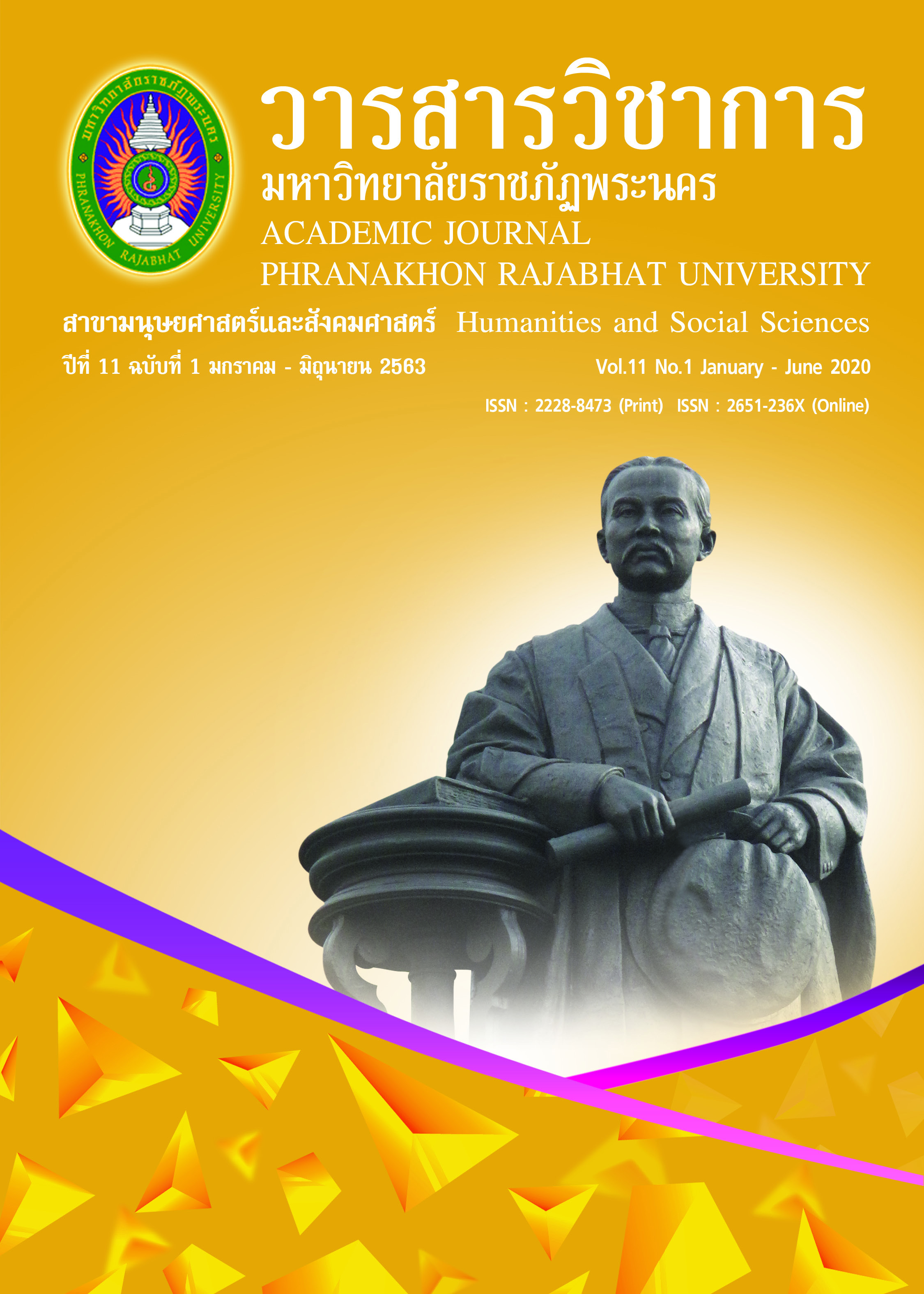DEVELOPMENT OF HEALTH RELATED PHYSICAL FITNESS NORMS FOR PHYSICAL EDUCATION PROGRAM STUDENTS IN COLLEGE OFTEACHER EDUCATION PHRANAKHON RAJABHAT UNIVERSITY
Keywords:
development, norms, health-related physical fitnessAbstract
The purposes of this research were to study health related physical fitness and to develop the health related physical fitness norm. The samples were 1th - 4th year students of Physical Education program, College of Teacher Education, Phranakhon Rajabhat University in Academic year 2017 by using Stratified random sampling according to year and sex defined according to the table of Krejcie and Mogan. 104 students (67 boys and 37 girls) were sampling group by simple random sampling. The health related physical fitness test for 18-29 year people of the Sports Authority of Thailand was the tool of this research by using Mean, Standard deviation, and F-test. The research result found that; 1.The health related physical fitness, the body mass index of male and female students was the reasonable average ( = 21.63 and 21.42). The waist circumference of male students was the standard ( = 0.83) but of female students was above the standard ( = 0.80). The back scratch test with right elbow straight up of both male and female students was above the benchmark ( = 5.54 and 8.27). The back scratch test with left elbow straight up of male students was below standard ( = -1.52) but of female students was above the benchmark ( = 5.78). Sit and reach test of male students was standard ( = 4.74) but of female students was below one ( = 5.04). 1-Minute abdominal curls of both male and female students was below ( = 55.55 and 49.08). 1 Minute push-ups of male students was below ( = 35.80) but of female students was in the standard ( = 34.81). For 3 Minute step test of both male and female students got the below standard average ( = 96.66 and 107.68). 2.The health-related physical fitness norms, the Body Mass Index (kg/m2) of underweight is less than 19 for male and 18 for female. For normal, male is 19-24.90, female is 18-23.90. For overweight, male is 25-29.90, female is 24-29.90, and it is more than 30 for them who are obese. The high level of male’s waist to hip ratio (inch) is less than 0.81 and female is 0.77. Male is 0.81 and female is 0.77-0.8 on moderate level. In low level, male is more than 0.86 and female is more than 0.84. The high level of male’s back scratch test (cm) is more than 9 and of female is more than 10. Male is 2-9 and female is 6-10 on moderate level. In low level, male is less than 2 and female is less than 6. The high level of male’s back scratch test (cm) is more than 3 and of female is more than 8. Male is (-5)-3, female is 3-8 on moderate level. In low level, male is less than (-5) and female is less than 3. The high level of both male and female’s sit and reach test (inch) is more than 6. It is 4-6 on moderate and less than 4 on the low level. The high level of male’s 1-minute abdominal curls (time) is more than 63, female is more than 56. Male is 48-63 and female is 42 - 56 on moderate level. In low level, male is less than 48, female is less than 42. The high level of male’s 1-minute push- ups is more than 42 and female is more than 39. Male is 29-42 and female is 30-39 on moderate level. In low level, male is less than 29 and female is less than 30. The high level of male’s 3-minute step test (1 minute pulse) is less than 89 and female is less than 101. Male is 89-105 and female is 101-114 on moderate level. In low level, male is more than 105 and female is more than 114.
References
Banchuen, K. & Banchuen, H. (2016). Physical Education for Health Development. Bangkok: V Print. (in Thai)
Corbin, C.B. & Lindsey, R. (2007). Fitness for Life. (5th ed.). Illinois: Human Kinetics.
Corbin, C. B., Welk, G. I., Lindsey, R. & Corbin. W. R. (2003). Concept of Physical Fitness: Active Lifestyles for Wellness. (11th ed.). New York: Mc Graw-Hill.
Directing Committee of National Health Development Plan No. 12. (2017). The National Health Development Plan No. 12. (2017-2021). Ministry of Public health. Retrieved October 25, 2016, from http://www.info.dmh.go.th/ilaw/files/healthplan12. pdf. (in Thai)
Krejcie, R.V. & Mogan, D.W. (1970). Determing Sample Size for Research Activities. Educational and Psychological Measurement. 30 (1970). 607-610.
Khunaaphisit, W. (1992, July – December). Does the compulsion focusing on physical fitness in teaching physical education in schools be appropriated?. Journal of Health, Physical Education and Recreation. 4 (2), 46. (in Thai)
Paeratkul, P. (1977). Measurement Techniques. Bangkok: Watana Panich. (in Thai)
Plowmale, A., & Smith, D. (1997). Exercise physiology for health, fitness, andperformalece. Massachusetts: Allyn and Bacon.
Shekittka, M.E. (2002). Body Composition and Fitness Levels of Kinesiology Majors andNon-Major, 2005. Retrieved March 10, 2017, form www.lib.umi.com. http://who/int/hpr/docs/glossary.pdf
Sports Authority of Thailand. (2003). Simplified Physical Fitness Test, SATST of Sports Authority of Thailand. New Thaimit Printing (1996). (in Thai)
Weerasiriwat, T. (1995). Principles of Sports Coaching. Bangkok: Odeon Store. (in Thai)
Downloads
Published
How to Cite
Issue
Section
License
"บทความวิชาการในวารสารฉบับนี้ ถือเป็นความรับผิดชอบของผู้เขียนเท่านั้น"
สงวนลิขสิทธิ์ตามพระราชบัญญัติลิขสิทธิ์




